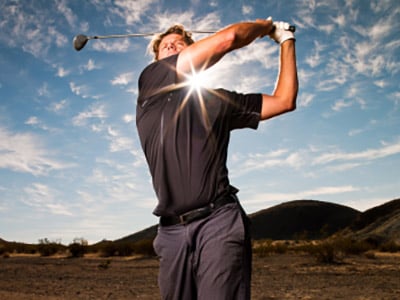Introduction
When individuals think about sports-related injuries, many of the injuries are associated with football, baseball, and basketball and usually to the regions of the ankle, knee, low-back, or shoulder.
However, due to their professional and recreational popularity, with participation spanning across all ages and abilities, many individuals develop injuries playing the non-contact sports of golf and tennis.
Two common injuries seen in these sportsare not even associated with the knee or shoulder, but with the elbow. These injuries are generically named golfer’s elbow and tennis elbow, but are clinically known as medial and lateral epicondylitis, respectively. Find out how Corrective Exercise strategies can help players recover, and avoid the dreaded golfer’s and tennis elbow.
The Difference Between Golfer’s Elbow and Tennis Elbow
Both medial and lateral epicondylitis are considered overuse injuries in which the tendons of the wrist flexor and extensor muscles become inflamed due to abnormal loading. Medial epicondylitis (golfer’s elbow) is characterized by pain in the medial portion of the elbow, while lateral epicondylitis (tennis elbow), the more prevalent disorder, is characterized by pain to the lateral aspect of the elbow.
The increased stress on these tendons is likely the result of muscle imbalances about the elbow and wrist. These imbalances may present as ROM deficits in elbow extension, pronation, and supination, or wrist flexion and extension.
Assessment and Corrective Exercise Strategies
Range of motion assessments of both the elbow and wrist can help to determine if deficits exist that could potentially lead to golfer’s elbow, tennis elbow, or both conditions simultaneously, as well as help to determine the most appropriate corrective exercise strategy.
For example, if limitations in elbow flexion or extension are observed, follow up assessments of these movements with the shoulder flexed and extended will help determine which muscles are causing the deficit.
Read more: Mobility and Stability: Joint Functions When We Move
If the shoulder is flexed and elbow extension is limited, then the brachialis is the primary muscle that may need to be addressed (Figure 1). If elbow extension is only limited in shoulder extension then the long head of the biceps is involved (Figure 2). Wrist flexion and extension should similarly be performed with the elbow flexed and extended.
If limitations are observed in wrist flexion (Figure 3) or extension (Figure 4) with the elbow extended, this suggests the common wrist flexors or extensors are limiting the motion. If the motion is limited with the elbow flexed then this suggests the wrist joint is compromised. A complete examination of the joint by a physical therapist, certified athletic trainer, or physician may be required.
The following section will provide sample programming strategies using the Corrective Exercise Continuum for elbow and wrist limitations that can lead to golfer’s and tennis elbow. First address the client’s tight muscles through inhibitory and static stretching techniques, and then address the client’s weak muscles through activation and integration exercises.
Step 1: Inhibit
Techniques to inhibit and lengthen the elbow and wrist flexors and extensors can be implemented following the assessment. Inhibitory techniques can be easily applied by having the individual provide pressure to regions of tightness and sensitivity on their upper arm and forearm. Maintain pressure for 30 seconds.
Step 2: Lengthen
A combination of movements that extend the shoulder and elbow are most effective for lengthening the long head of the biceps (Figure 5). Similarly, combined movements of elbow extension and wrist flexion (Figure 6) or extension (Figure 7) are most effective for lengthening forearm musculature. These techniques should follow lengthening guidelines for 2-3 repetitions for 30 seconds to facilitate a change in length over a few weeks.
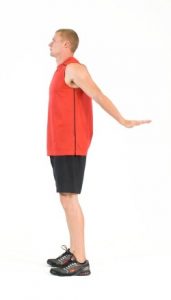 |
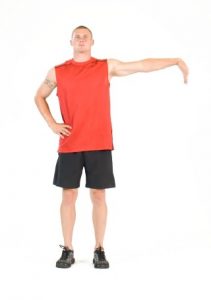 |
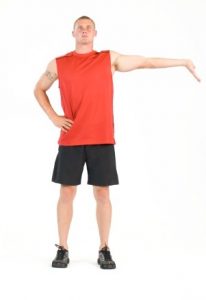 |
| Figure 5 | Figure 6 | Figure 7 |
Step 3: Activate
Activation exercises to isolate the elbow flexors and extensors as well as the wrist flexors and extensors should follow the selected inhibit/lengthen intervention(s). Effective exercises to isolate both the long and short head of the triceps (Figure 8) as well as the long and short head of the biceps (Figure 9) are examples of how traditional strengthening exercise applied in the appropriate progression can obtain optimal results. Similar isolation exercises should be performed for the wrist flexors and extensors.
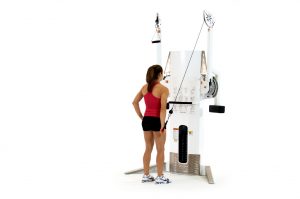 |
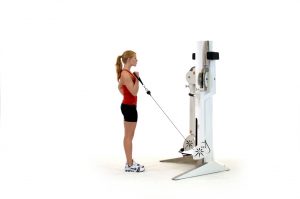 |
| Figure 8 | Figure 9 |
Step 4: Integration
Integration exercises for the wrist and elbow can include almost any exercise you may currently implement that requires gripping with the hand while performing combined movements of the kinetic chain.
The most effective interventions will likely draw on neural principles which couple wrist and elbow flexion with shoulder flexion, and wrist extension with elbow extension and shoulder extension. These movements can be incorporated into the full workout during exercise such as a standing lat pulldown (flexor mechanism) (Figure 10) or a prone ball tricep extension with cobra (extensor mechanism) (Figure 11).
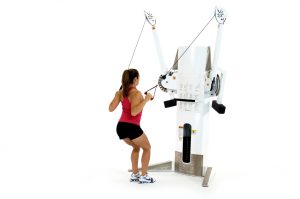 |
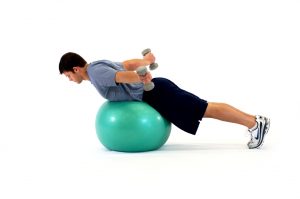 |
| Figure 10 | Figure 11 |
Summary
With the popularity of both tennis and golf comes the risk of injury. In both sports, the elbow region takes on a large amount of stress and overuse injuries can commonly occur. These injuries, however, can be reduced by applying the proper stretching and strengthening techniques so the elbow joint and associated tissues can take on the stresses that come with both of these sports.
This will vary by golfer, but the principles stay the same.
For more corrective exercise techniques for the elbow and wrist, as well as the rest of the body, refer to NASM’s Corrective Exercise Specialist (CES) course to learn more.

